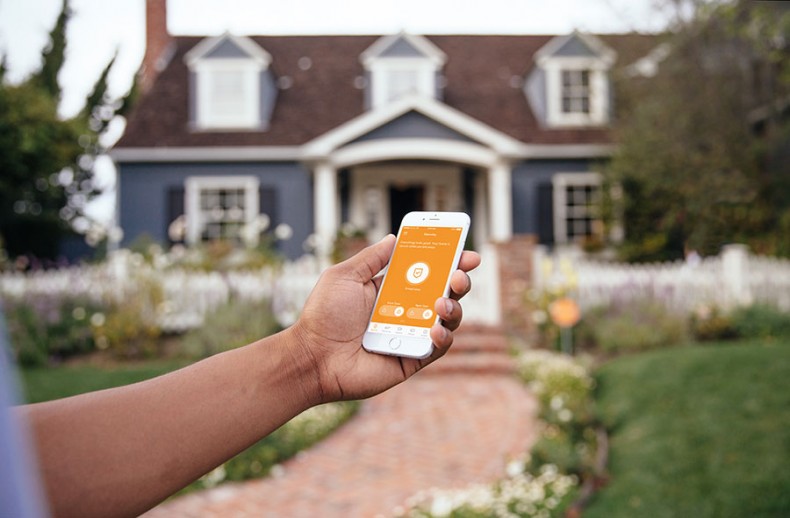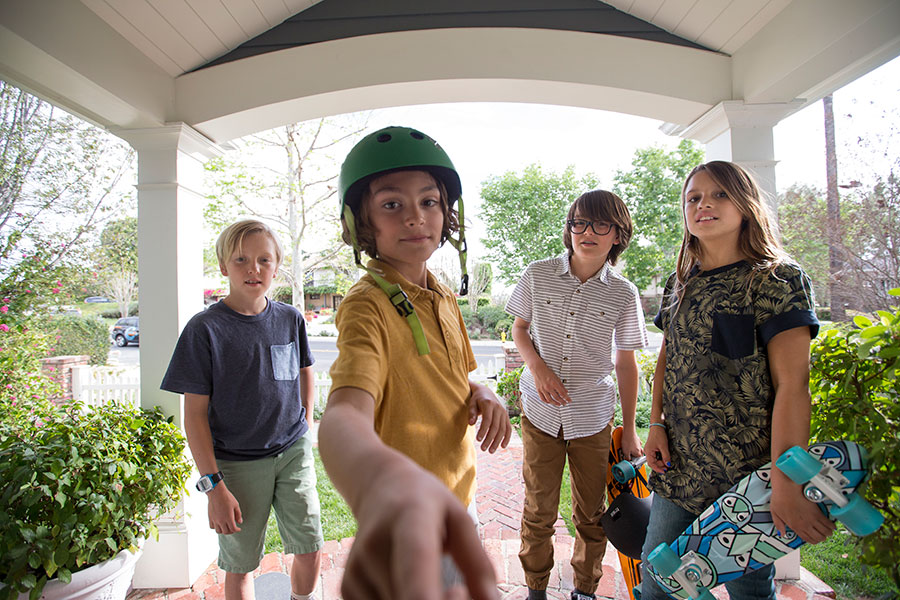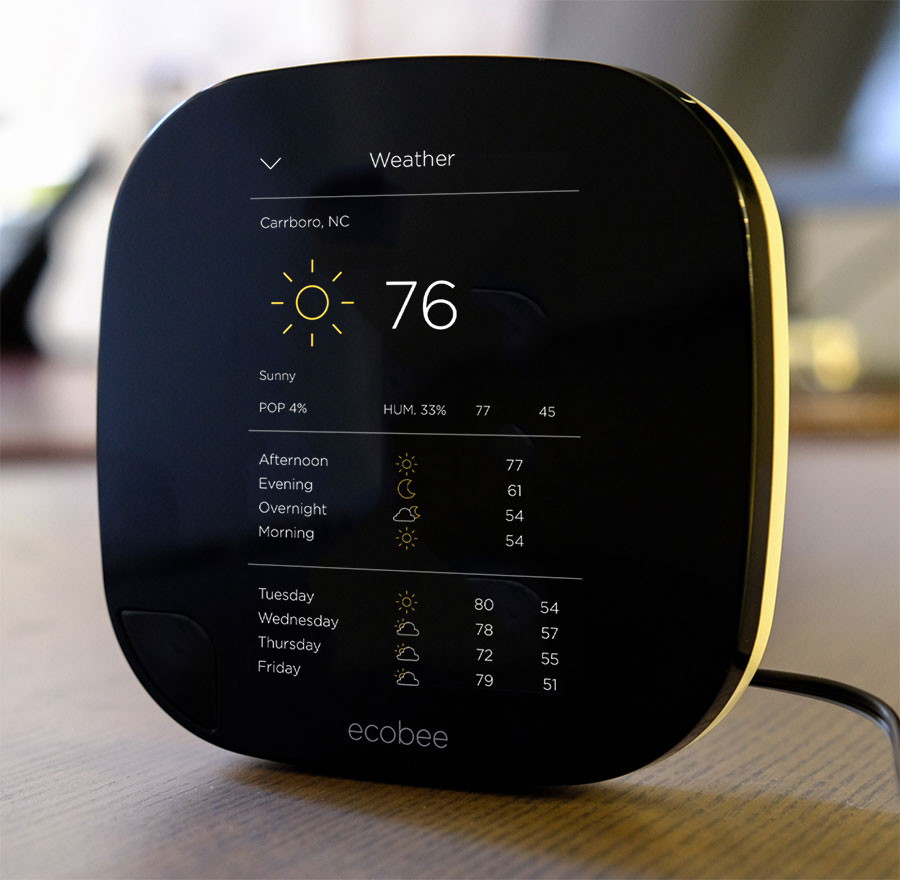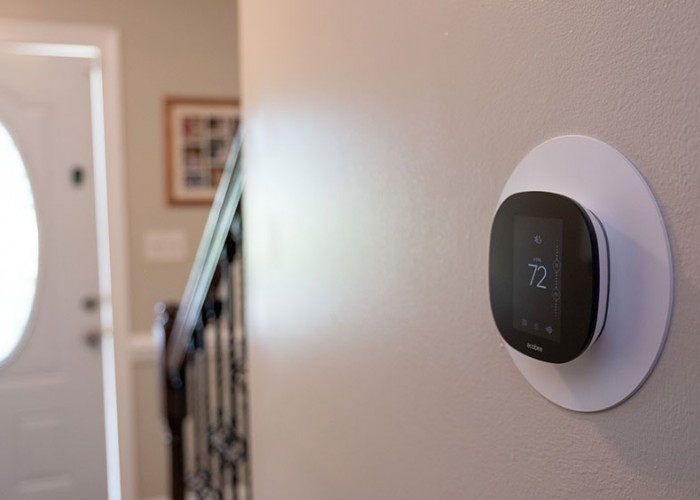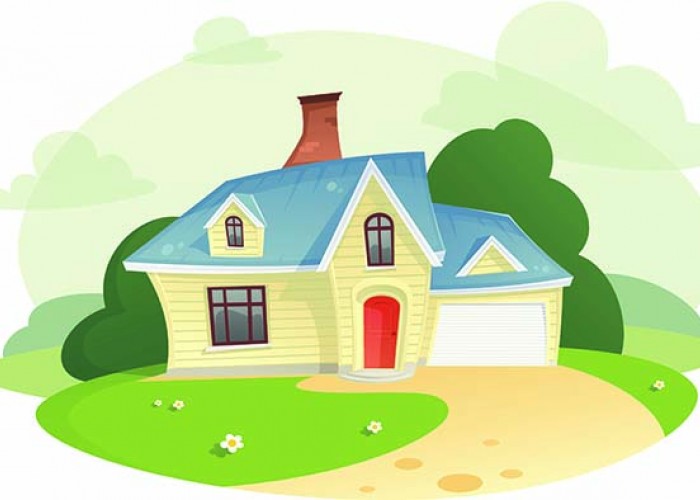Keeping Up with the Jetsons
Off-the-shelf technology has made futuristic smart homes a reality
By Terry WosterAn avalanche of new ‘smart’ home technology — video doorbells, self-adjusting thermostats, lighting that remembers just how bright you prefer each room — is flowing onto the market, offering a wealth of options for anyone considering home-improvement projects.
Not every homeowner will want the futuristic home of George and Jane Jetson from the 1960s television cartoon show “The Jetsons.” (Rosey the Robot, for example, is still a ways off for the average home owner.) These days, though, anyone considering a home improvement project that involves renovations and upgrades should consider smart-home systems, available to add convenience, bolster security and increase energy efficiency.
“There’s an avalanche of technology innovation aimed at our homes,” says David Siroty, vice president for North American Communications for Coldwell Banker Real Estate. “And there is an explosion of do-it-yourself products on the market, bringing smart homes into reach of nearly everyone.”
‘Wow factor’ vs. reality
Besides many highly practical reasons to upgrade to smart home systems, there’s a “wow factor” to some of the devices (those things that cause visitors or potential buyers to whisper “wow” when they step into the home). A device currently on the market, for example, allows a homeowner to use a smartphone from afar to access a camera inside the refrigerator to check the contents. Now is a feature like this something everyone needs? Probably not, but it could be handy for answering the inevitable question “do we need milk?” if you’re at the store and miles away from home.
It’s still a relatively new market, but the trend toward acceptance of and demand for smart-home features is accelerating, says Trevor Lambert, senior director of Brand Management for Vivint Smart Home, a smart-home services provider headquartered in Utah.
“Many people think it’s complicated, but any home can be upgraded,” Lambert says. “Any home can incorporate smart-home technology to some level. The reality is a smart home doesn’t need to be a certain age.”
Access to the internet is key, and in many rural areas, that access will determine how quickly smart homes develop, said Brian Sloboda, a senior program manager for the National Rural Electric Cooperative Association.
“It’s kind of chicken and egg,” he explains. “People in rural areas aren’t going to get smart-home technology without access to reliable broadband internet. But broadband internet service providers won’t go to rural areas without the assurance of customers.”
North Carolina’s electric cooperatives often serve communities facing this challenge, and are working with legislators and other stakeholders to work toward solutions (see “Representing the Grassroots,” March 2017).
Mainstream technology
The market demand for smart-home products is there and growing, according to a 2015 survey by Coldwell Banker and CNET. More than one in four Americans own smart-home devices, and 87 percent of those surveyed say technology makes their lives easier. More than half of those with smart-home products say the technology saves time (an average of 30 minutes a day) and 45 percent say on average their smart-home technology saves them more than $1,100 a year.
Siroty compares the expansion of smart-home technology to the growth in popularity of granite countertops. Granite countertops began as a luxury item, became a more traditional feature of homes and has become something that simply is expected to be part of a home, he explains. Smart-home technology is moving through that same process, from luxury to expected feature.
The world of home improvements is replete with stories of do-it-yourself successes and failures. “Smart” home improvements are no different. If you’re really handy and comfortable with technology, you can probably do a lot of things on your own.
“If you don’t feel that handy or have a lot of confidence, there’s a lot of value in having someone come in and do the job,” Lambert says. With a specialist, the homeowner knows the job is done and has access to trouble-shooting help if needed.
Federal Trade Commission attorney Carl Settlemyer notes that smart technology is rapidly evolving, “promising even greater convenience, security and comfort in the future.”
But the rapid growth puts a burden on consumers to understand how various devices work and what support the manufacturers will provide after purchase, he stresses. Consumers should ask questions when they shop for smart devices. Among those Settlemyer recommends:
- Find out if the product will work with connected devices you already have and with other companies’ devices.
- Ask how you’ll get security and other product updates.
- Take time during your initial set-up to familiarize yourself with any dashboards and widgets that you’ll use to control the device remotely.
- Don’t just accept out-of-the-box default settings. Turn on secure features and reevaluate only after you’re familiar with the device (ecobee3 smart thermostats, for example, can be programmed specific to HVAC equipment and North Carolina’s climate with recommendations from North Carolina’s Electric Cooperatives and Raleigh-based Advanced Energy).
- Consider if you’ll be able to keep using the device if the manufacturer stops providing updates and other support.
What’s right for you
With those cautions in mind, what are the go-to devices or systems for a smart-home improvement project? To be smart about selecting “smart” features, take some time to consider your own needs and applications, Sloboda recommends. On his list for homeowners interested in dipping a toe into the smart-home pool:
- An internet-controlled thermostat, such as the ecobee3, Nest or Honeywell Lyric. “It’s going to save you energy. It’s going to save you money. It’s going to make you more comfortable.”
- A security camera system. “You can set alerts for when someone comes near the front door or near the barn. This is a peace of mind issue.”
- Smart crockpot. “This is where you’re going to think I’m getting way out there — to communicate over the internet with the crock pot. But you can take it from high to low, or from low to warm when it’s time, or if you get held up getting home.”
- Electrical outlets. “Yes, they’re simply electrical outlets, but they can be controlled through the internet.” Think of it as a security measure if it gets dark before you come home, or if you’re out of town and want to switch on a lamp.
- “The question to ask is: ‘Would I actually use this?’ It can be easy to get all caught up in the hype,” Sloboda cautions.
Whatever the level of home improvement project contemplated, looking into smart-home applications is making more sense every day, according to Siroty.
“It’s real. The technology is available,” he says. “Now it’s largely a matter of how fast the consumer becomes aware of it. We’re in the story-telling phase.”
About the Author
Terry Woster is a South Dakota-based journalist who covered state legislative issues for 40 years. He writes for electric cooperatives nationwide.-
More about smart home technology
-
Share this story:

